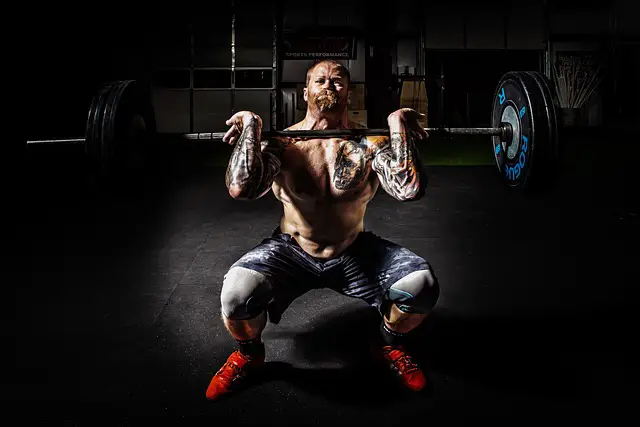Ladies and gentlemen, welcome to the great debate: does weightlifting stunt growth? It’s a question that has been asked for decades, with no clear answers in sight. Some say that lifting weights will make you shorter than the runt of the litter, while others swear that it did nothing but bring them to new heights (pun intended). Today, we shall explore this age-old myth with the wit and humor it deserves. So, buckle up, grab your protein shakes, and let’s see if you can lift your way to new heights or end up being the shortest person in the room (spoiler alert: it’s probably your genetics).
Contents
- 1 1. Myth or Reality: Can Weightlifting Affect Height Development in Children and Teens?
- 2 2. Examining the Science Behind Weightlifting and Growth: Facts and Fiction
- 3 3. The Potential Risks of Weightlifting on Young Bones and Joints: What Studies Reveal
- 4 4. Understanding the Physiology of Strength Training: Growth Hormones and Body Composition
- 5 5. How to Safely Incorporate Weightlifting into Kids and Adolescents’ Fitness Programs
- 6 In Conclusion: Go Ahead and Lift!
1. Myth or Reality: Can Weightlifting Affect Height Development in Children and Teens?
So, you’re telling me if I lift weights, I won’t grow taller? Well, that’s a relief! I was worried I’d end up towering over everyone like a human skyscraper. But wait a minute, is this just a myth or reality?
Let’s break it down with some facts. Weightlifting doesn’t directly affect a child or teen’s height development. However, improper weightlifting techniques can harm their growth plates. So, unless you’re lifting weights like a caveman tossing boulders with reckless abandon, you won’t stunt your growth.
On the flip side, weightlifting can improve overall health, boost confidence, and increase strength. Nothing feels better than showing off your toned biceps to your friends and enemies. Plus, the perks of being the designated muscle man/woman when it’s time to move furniture or open a jar outweigh any potential concerns about your height.
- So, myth or reality? Myth!
- Unless you’re lifting weights like a madman, you won’t stunt your growth.
- But who needs extra height when you can have toned muscles and the ability to lift heavy objects with ease.

2. Examining the Science Behind Weightlifting and Growth: Facts and Fiction
So, you want to know the science behind weightlifting and growth, eh? Well, hold onto your sweatbands because we’re about to separate fact from fiction.
Fact: Lifting heavy weights can lead to increased muscle mass and strength. When you lift weights, your muscles experience tiny tears which then repair and grow back stronger. This process is called hypertrophy, and it’s the reason that lifting weights can lead to noticeable changes in muscle size and strength over time. Just don’t expect to look like Arnold Schwarzenegger overnight.
Fiction: Lifting weights will make you bulky. Sorry, ladies (and some gents), but unless you’re an Olympic-level weightlifter or taking steroids, you’re not going to suddenly become a bodybuilder. Women, in particular, often avoid lifting weights because they’re afraid of getting too muscular, but building muscle takes a lot of time and effort. Plus, muscle is denser than fat, so even if you do gain a little muscle, it’s likely that you’ll look leaner and more toned overall.
Fact: Proper form is key to avoiding injury and maximizing results. While it’s tempting to just start lifting heavy weights willy-nilly, it’s important to learn proper form first. Poor form can lead to injury, which can derail any progress you’ve made. Plus, using proper form ensures that you’re targeting the right muscles and getting the most out of each exercise. So, do yourself a favor and take some time to learn proper lifting technique. Your body will thank you.
3. The Potential Risks of Weightlifting on Young Bones and Joints: What Studies Reveal
One of the major concerns for parents who have teenagers who are avid weightlifters is the potential impact on young bones and joints. The good news is that studies show weightlifting has numerous benefits in terms of increasing strength and improving overall health. However, there are some potential risks that have been identified in scientific research.
One of the major risks is the possibility of developing bone fractures or joint injuries as a result of the increased stress placed on these areas during weightlifting. This is particularly common in teenagers who are still growing and developing, as their bones and joints are more susceptible to injury. To reduce the risk of injury, it is important for young weightlifters to receive proper training and to use appropriate safety equipment at all times.
Another potential risk associated with weightlifting is the impact on physical growth and development. Some studies suggest that excessive weightlifting can interfere with the normal growth and development of bones and muscles in teenagers. This can lead to a range of long-term health issues, including chronic pain, joint inflammation, and reduced mobility. To minimize these risks, young weightlifters should be monitored by a qualified trainer and should avoid overexertion or excessive strain on their muscles and joints.
Overall, the potential risks associated with weightlifting on young bones and joints are not to be taken lightly. However, with appropriate precautions and expert guidance, it is possible to enjoy the many benefits of this popular form of exercise without compromising your long-term health and wellbeing. So, what are you waiting for? Let’s hit those weights and flex those muscles to get a body that deserves all the attention and admiration!
4. Understanding the Physiology of Strength Training: Growth Hormones and Body Composition
So, you want to understand the physiology of strength training? You’ve come to the right place, my friend! Let’s talk growth hormones and body composition.
First things first, let’s talk about growth hormones. These bad boys are produced in the pituitary gland and are responsible for promoting cell growth and regeneration in the body. And guess what? Strength training has been shown to increase the production of growth hormones in the body! That means more gains, baby!
Now, let’s talk about body composition. You know that old saying, “Muscle weighs more than fat”? Well, it’s not entirely accurate. One pound of muscle actually weighs the same as one pound of fat (shocking, I know). But here’s the kicker – muscle is more dense than fat, meaning it takes up less space in your body. So, even if you weigh the same amount, if you have more muscle and less fat, you’ll look leaner and more toned. And who doesn’t want to look good naked?
- Strength training increases the production of growth hormones in the body
- One pound of muscle weighs the same as one pound of fat (duh)
- Muscle takes up less space in the body than fat, so more muscle = leaner, more toned appearance
So, there you have it – a brief rundown of the physiology of strength training. Keep hitting those weights, and you’ll see some serious gains in no time (just don’t forget to work on your dad bod tan lines).
5. How to Safely Incorporate Weightlifting into Kids and Adolescents’ Fitness Programs
If you’re looking to get your kids buff before they hit puberty, you may be wondering how to safely add weightlifting to their fitness regime. While most parents are perfectly comfortable handing their kid a 20-pound barbell, there are a few things to keep in mind to make sure they don’t end up like Popeye (minus the spinach).
First and foremost, make sure your child is ready to lift weights. Just because they can pick up their little brother doesn’t mean they’re ready to throw around a dumbbell. Make sure they’ve got the coordination and strength to perform the exercises without hurting themselves. If you’re unsure, consult a professional like a personal trainer or pediatrician.
Once you’ve confirmed your little Arnold Schwarzenneger is ready to pump iron, the next step is to start with lightweight equipment. Make sure your child can handle the weight you’re giving them, and don’t hesitate to adjust down if necessary. Remember, it’s not about how much they lift, it’s about proper form and technique. Plus, there’s no shame in starting small—arguably, the smaller the weight, the bigger the ego boost.
In Conclusion: Go Ahead and Lift!
Well folks, it looks like the myth has finally been busted. Turns out that lifting weights won’t make you a little shrimp for the rest of your life. Who would’ve guessed? So grab those dumbbells, hit the gym, and don’t be afraid to pump some iron. Who knows, maybe you’ll even grow a few inches taller. (Just kidding, we can’t promise that.) But seriously, weightlifting is actually pretty darn good for you. So go ahead, lift your heart out, and watch as your muscles grow bigger and stronger. And on the bright side, you’ll never have to worry about reaching things on high shelves ever again.








Leave A Comment